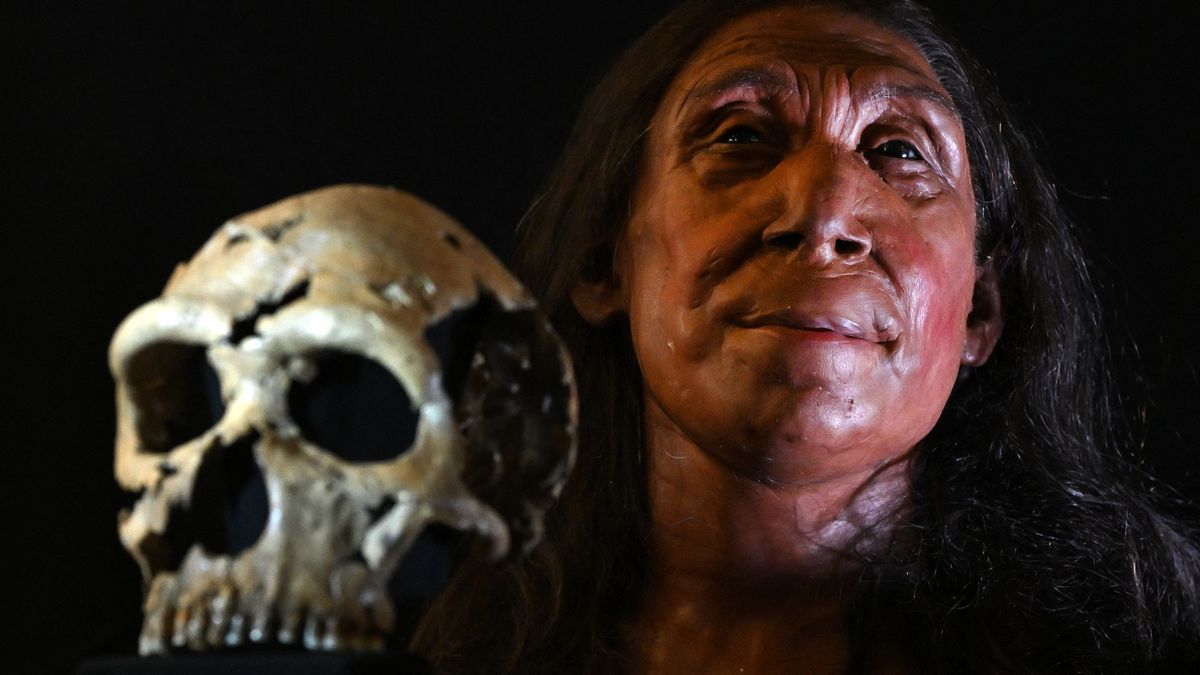Neanderthals may not have truly gone extinct but instead may have been absorbed into the modern human population. That’s one of the implications of a new study, which finds modern human DNA may have made up 2.5% to 3.7% of the Neanderthal genome.
“This research really highlights that what we think as a separate Neanderthal lineage really was more interconnected with our ancestors,” Fernando Villanea, a population geneticist at the University of Colorado Boulder who was not involved in the study, told Live Science. Both modern human and Neanderthal populations “shared a long history of exchanging individuals.”
Neanderthals were among the closest extinct relatives of modern humans, with our lineages diverging around 500,000 years ago. More than a decade ago, scientists revealed that Neanderthals interbred with the ancestors of modern humans who journeyed out of Africa. Today, the genomes of modern human groups outside Africa contain about 1% to 2% of Neanderthal DNA.
Related: ‘More Neanderthal than human’: How your health may depend on DNA from our long-lost ancestors
However, researchers know less about how modern human DNA may have entered the Neanderthal genome. That’s largely because there are currently only three known high-quality examples of a complete Neanderthal genome that have survived — from specimens unearthed in Vindija cave in Croatia, which date to 50,000 to 65,000 years ago, and Chagyrskaya and Denisova caves in Russia, which date to about 80,000 and 50,000 years ago, respectively.
In comparison, scientists have sequenced the genomes of hundreds of thousands of modern humans since the completion of the Human Genome Project in 2003.
“There has been a considerable amount of research focused on how matings between Neanderthals and modern humans affected our DNA and evolutionary history,” study senior author Joshua Akey, a population geneticist at Princeton University in New Jersey, told Live Science. “However, we know much less about how these encounters impacted the genomes of Neanderthals.”
In the new study, scientists relied on the fact that both modern humans and Neanderthals generally possess two versions of every gene, one inherited from the father, the other from the mother. Because the two groups were more different from each other than they were from others of their own kind, interbreeding between Neanderthals and humans would lead to offspring that had a higher chance of possessing two different versions of each gene — a situation known as heterozygosity — than children that did not result from such interbreeding.
The researchers compared the genomes of the three Neanderthals with those of 2,000 modern humans. They discovered the Neanderthal genome may consist of 2.5% to 3.7% modern human DNA. That is akin to 1 in 30 modern human parents in the ancestral Neanderthal population.
The research team’s analysis suggested that modern human DNA entered the Neanderthal genome during at least two distinct epochs of interbreeding — one about 200,000 to 250,000 years ago, and the other about 100,000 to 120,000 years ago. Interbreeding may have taken place at other times, but such events may not have left any detectable traces in the Neanderthal genome, Akey said.
A recent, not-yet peer-reviewed study suggests that most Neanderthal DNA seen in the modern human genome resulted from a single major period of interbreeding about 47,000 years ago that lasted about 6,800 years. Interbreeding that occurred at other times, such as the earlier events that impacted the Neanderthal genome, likely did not leave a detectable trace in our genome.
Skulls found in the Skhul and Qafzeh caves in Israel date to around 100,000 years ago — around the same time as one of the major interbreeding events identified in the study. Those fossils appear to be modern human remains, but they still have relatively primitive features such as larger brows, which might “be signs of gene flow from Neanderthals,” Chris Stringer, a paleoanthropologist at the Natural History Museum in London who was not involved in the new study, told Live Science.
By analyzing the level of genetic variation seen between the three Neanderthal genomes, the new study also suggested the long-term average Neanderthal population was about 20% smaller than previously estimated. “This doesn’t sound like a large difference, but given that Neanderthals were already estimated to have a fairly small population size, the fact that it was even smaller is an important insight,” Akey said.
These new smaller estimates of Neanderthal population size suggest that Neanderthals may have disappeared because “they were simply absorbed into the modern human population,” Akey said. “Recurrent waves of modern human migrations out of Africa eventually overwhelmed the ability of Neanderthals to remain a distinct population, and they were ultimately just assimilated into the modern human gene pool.”
Future research could study the biological effects, good or bad, that modern human DNA may have had in Neanderthals, Akey said.
The scientists detailed their findings online Thursday (July 11) in the journal Science.














/https://tf-cmsv2-smithsonianmag-media.s3.amazonaws.com/filer_public/34/31/3431771d-41e2-4f97-aed2-c5f1df5295da/gettyimages-1441066266_web.jpg)






Discussion about this post